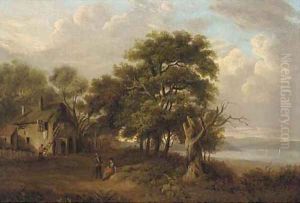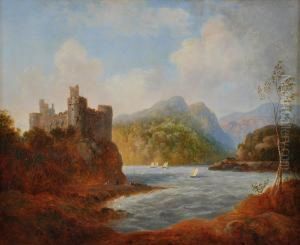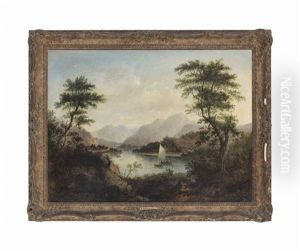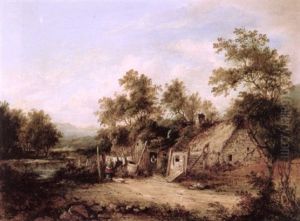Barbara Nasmyth Paintings
Barbara Nasmyth was a Scottish painter born in 1790 in Edinburgh, Scotland. She was one of the six daughters of Alexander Nasmyth, a prominent Scottish landscape painter and a pivotal figure in the Edinburgh art scene. The Nasmyth family was deeply entrenched in the artistic and intellectual circles of the time, providing a fertile ground for Barbara and her siblings to cultivate their artistic talents. Barbara, along with her sisters, was trained by her father, which was somewhat unconventional for women at the time. This training allowed her to develop a unique artistic voice, though, like many women artists of her era, her work was often overshadowed by that of her male relatives and counterparts.
Barbara Nasmyth's contributions to art are representative of the challenges and limitations faced by women artists in the 19th century. Despite these challenges, she managed to carve out a space for herself within the Scottish art scene. Her works primarily consisted of landscapes, a genre her family is most associated with, and she was known for her delicate handling of watercolors. Barbara's landscapes often depicted serene Scottish countryside scenes, showcasing her deep connection to her homeland and its natural beauty.
Throughout her life, Barbara remained somewhat in the background, with her art rarely receiving the public attention it deserved. This lack of recognition can be attributed to the era's societal norms, which often relegated women to the private sphere and viewed their artistic endeavors as mere hobbies rather than serious professional pursuits. Despite this, Barbara Nasmyth continued to paint and contribute to the family's artistic legacy.
Barbara Nasmyth died in 1863, leaving behind a modest but meaningful body of work. Today, her contributions, along with those of her sisters, are beginning to be re-evaluated and appreciated within the context of Scottish art history and the broader narrative of women's contributions to art. Although her works are not widely known, they offer valuable insights into the life and times of women artists in the 19th century and serve as a testament to the enduring nature of artistic expression, regardless of recognition.



